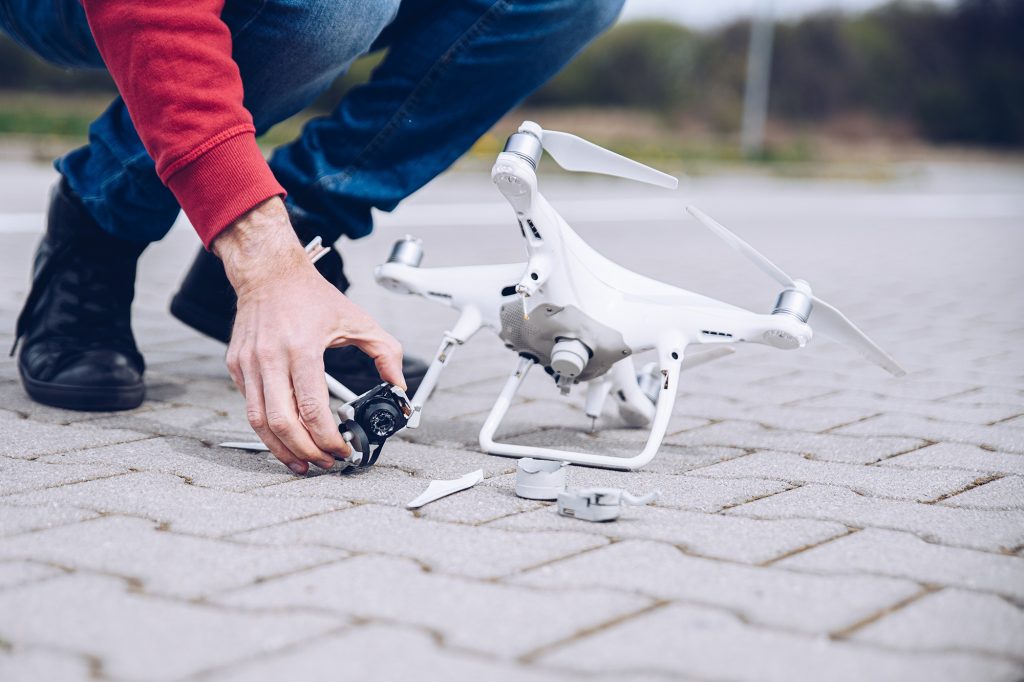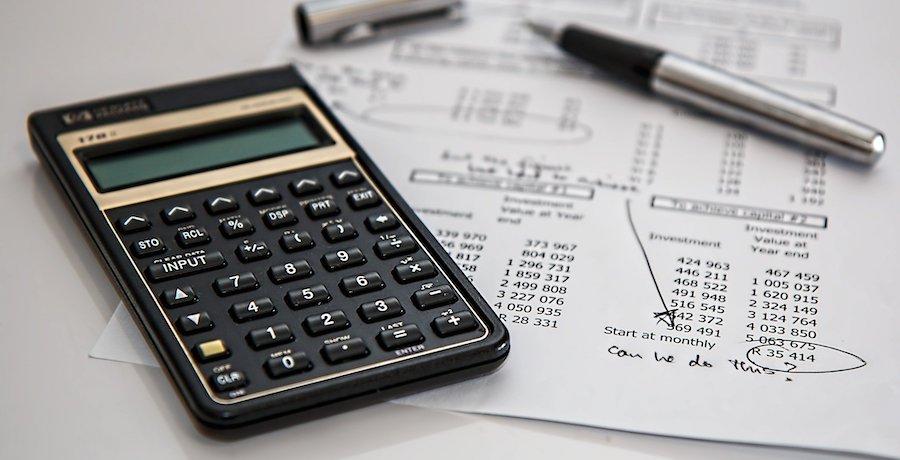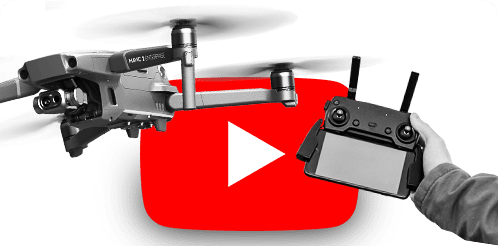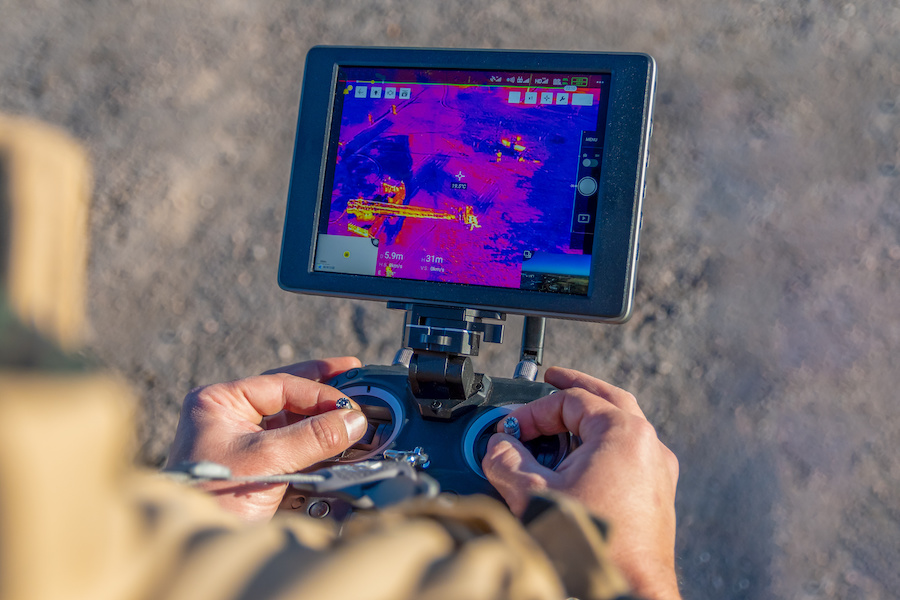-
Why get drone insurance?
-
Are Part 107 pilots required to get drone insurance?
- Drone News Update
-
Types of drone insurance
- 1. Drone hull insurance
- 2. Payload insurance
- 3. Liability insurance
-
How much will it cost?
- 1. Traditional or episodic?
- 2. How much coverage do you need?
- 3. What industry do you work in?
- American Manufacturer Freefly Talks New Product & Drone Ban - Matt Isenbarger - PiXL Drone Show #82
- 4. How much experience do you have as a drone pilot?
-
Final thoughts
Starting a drone business sounds like a dream come true for most people. They get to do something they love and earn some good bucks at the same time. However, just like any business, a drone-based business holds no guarantee of success. To make sure that your hard-earned investment does not go to waste, you are going to need to put a few safety measures in place.
We are, of course, talking about insurance. Is there a particular type of insurance that’s recommended for drone pilots? Is it a good idea to get one, or is it required by any law?
Why get drone insurance?
Much like the insurance that you get for your house or car, drone insurance provides a financial safety net should something untoward happen. This could include damage to your equipment, that of others, or injury to a person.
If you’re just flying a drone for fun, then drone insurance gives you the assurance that your drone can be repaired or replaced should it get damaged. Of course, getting insurance might not be practical if you’re flying a cheap drone that costs less than $500. However, anything worth close to $1500 may be worth insuring. Compared to the cost of getting a new drone, the cost to insure your drone may still be much cheaper.
Things are different if you’re using your drone for profit. If you’re running a drone photography or filmmaking business, or if you offer aerial survey services, then your means of earning money is lost without your drone. Protecting your drone or any additional equipment, you use for your service simply makes sense
However, there’s another aspect of commercial drone flight that recreational drone pilots may not experience. Jobs from clients may take you to scenarios and locations that are unfamiliar, and these may have risks that you cannot anticipate. Any drone-related accidents that take place in the middle of a job could make you liable for financial damages. Depending on the extent of the damage, you could end up having to pay more than the cost of your drone.
Thus, if you’re a commercial drone pilot, getting insurance isn’t just a matter of protecting your drone – it’s about protecting your business. It also sends a message to potential clients that you operate with less risk and that you can complete their jobs even if something untoward happens.

Are Part 107 pilots required to get drone insurance?
No, there is no provision in the Part 107 rules that require licensed drone pilots to have any form of insurance to operate. However, a growing number of commercial drone pilots are now covered with some sort of insurance, which has made it the new norm in the industry. Even traditional insurers have come up with drone insurance policies – an idea that many of them balked at a few years back.
If you offer any type of drone services, it would be difficult to remain competitive if you don’t have insurance. After all, clients will always go for the risk-free option when looking for potential drone pilots. Although you may lower your rates in an attempt to undercut insured drone pilots, this move just doesn’t make good business sense.
Types of drone insurance
The industry for commercial drone services has matured enough for traditional insurance companies to come out with their own policies geared towards drone pilots. With the greater number of options, diversification of the policies have also happened. This allows drone pilots to sign up to “piece-wise” policies according to what they need, making drone insurance more palatable and affordable.
With that aside, here are the three major types of drone insurance policies you should consider:
1. Drone hull insurance
The most basic type of drone insurance and one that we encourage all drone pilots to have (except if you fly a really cheap drone) is drone hull insurance. Simply put, the policy will cover any costs associated with having your drone repaired or replaced if it gets damaged.
The cost of drone hull insurance will depend on the market value of your drone. The more expensive the drone, the greater the coverage you’ll need, and the higher annual premium you’ll have to pay. If you’re getting drone hull insurance, make sure that the premium your paying is based on the depreciated value of your drone – after all, the prices of most drones rapidly go lower with every year.
For those who own DJI drones, you may consider getting their in-house drone insurance policy, called DJI Care Refresh. By signing up for DJI Care Refresh and paying their one-time fee, they will assure that they can replace your drone should it be damaged. The replacement unit will either be new or equivalent to new, subject to DJI’s strict testing standards. A major stipulation of this policy is that you have to send DJI the damaged drone, so don’t go crashing it somewhere you can’t recover it.
2. Payload insurance
In some instances, commercial drone pilots may use payloads that cost almost as much or more than their drones. A few examples of these high-end payloads are LiDAR sensors, thermal cameras, NDVI sensors, or high-resolution cameras. Since these pieces of equipment are just as essential to your business as your drone, then it makes sense to have them insured as well.
Why not lump payload insurance together with the drone? Although it might be simpler that way, the cameras or sensors may have different rates of depreciation compared to drones. By separating them under different policies, you can be sure that you are paying the right amount according to the right schedule. As with drone hull insurance, you need to take note of the current market value of your payload, so you don’t end up overpaying the premiums.
3. Liability insurance
Liability insurance is so important that it could be the one thing that will protect you from financial ruin. This policy will cover any financial expenses related to an event for which you are liable. This will include any damage to property or personal injury caused by your drone operations. If your drone ends up crashing on someone else’s rooftop or causing lacerations on a person that are bad enough to require hospitalization, the coverage of liability insurance may be able to partially or completely pay for any associated expenses.
As you can imagine, the potential costs of liability could be very large. This means that you need a similarly large safety net. This also means that getting liability insurance is always a good idea, whether you fly drones for fun or at a professional capacity. After all, a bad drone accident isn’t just something that can ruin a business – it can throw your whole financial situation in shambles for several years.
Liability insurance policies for drone pilots typically start at a coverage of $500,000. Large drone-based businesses may have coverage of up to $10 million. A lot of factors will come into play in assessing how much of policy coverage you’ll need, which also corresponds to how high of an annual premium you’ll have to pay.
How much will it cost?
The exact figure that you’ll need to spend is something that will be determined between you and your preferred insurance company. Some negotiations will be needed before you can agree at a final price. You can get a policy with wider coverage if you’re willing to pay extra, or you can get a very basic policy for a cheaper premium. Rather than give a straightforward answer, here are the factors that will play a role in determining the costs of insurance:
1. Traditional or episodic?
Traditional drone insurance policies are just like any other property insurance – you agree on financial coverage, and the policy remains enforced as long as you pay the annual fee. It’s a simple system that has worked for years, and you enjoy the benefit of 24/7 coverage. Under a traditional insurance policy, you and your insurance provided agree into a long-term commitment.
Episodic insurance policies were borne out of the fact that many commercial or recreational drone pilots don’t really get to fly their drones frequently enough to justify paying annual premiums. Instead, they can get an insurance policy on the fly. All it takes is to set a schedule with the insurance provider via phone call or mobile app for your planned drone flight.
Under an episodic insurance policy, the insurance provider will charge a fee according to the level of risk of the operations you’re planning. This is done via an up-to-date risk map that they maintain as reference. Fees are typically paid by the hour, so you just have to pay for the time that you need. This innovative insurance type isn’t so common yet, but we can see it becoming more of a thing because of how popular it has turned out to be for many drone pilots.
2. How much coverage do you need?
Much like insurance for your house or your car, you can get additional coverage for drone insurance if you’re willing to pay an added premium. Coverage in this context refers to the set of circumstances under which your drone insurance policy will apply. For instance, the DJI Care Refresh policy allows for water damage but cannot be invoked should you lose your drone.
Coverage could also refer to the financial value that your policy can provide in case of an accident. Determining the market value of your drone is simple, but how about the cost of any liability you could incur?
As with many aspects of insurance, your policy should be crafted according to your situation. You might not need water damage on your policy if you don’t plan on flying your drone near any bodies of water. If you take real estate photos around expensive neighborhoods, then you might want to consider how expensive an accident in such a place could be in your liability plan. It would be better to be over-prepared rather than find yourself having to pay out of pocket to keep your drone business afloat.
3. What industry do you work in?
Insurance companies are betting on you NOT to get into any accidents while your policy is in effect. This is how they turn a profit. During negotiations, an insurance agent will determine the risk level they are taking to have you on board and will adjust your premiums accordingly. The riskier the prospect, the higher the premiums.
Depending on the industry that you’re offering your drone services for, you may also already be undertaking an inherent level of risk. If you just do aerial photography during daylight and in sparsely populated areas, then your premiums may be lower. However, services that require drone flight at night or near critical infrastructures such as power lines and communications tower pose are so much riskier. If you work in similar industries, then you should anticipate having to pay higher premiums.
4. How much experience do you have as a drone pilot?
Related to the item above, you could be able to convince an insurance company that they are taking on a low-risk prospect based on your level of experience. It would be great if you can show them actual documents that can attest to your skill or experience. Training certificates, results of your past work, detailed flight logs, and pre-flight inspection and maintenance checklists are just some of the stuff that you can show to help your case.
Again, the exact costs of insurance will vary greatly from one case to another. However, we can give you ballpark estimates so you can include the expenses in your plans. Drone hull and payload insurance are pretty simple because it only takes into account the cost of your equipment. You can expect to pay a 10% to 15% of the market of the value of your drone or payload as an annual premium. For example, you can insure a drone that costs between $1500 to $2000 at a fee of $220 per year.
Liability insurance is much more expensive because of higher financial coverage. The riskier your service or industry, the large coverage you’re going to need. Typical liability insurance policies start at coverage of $1 million, for which you’ll have to pay an annual premium anywhere between $600 to $1000. Extending that coverage to $5 million will increase your premium payments accordingly to about $2000 per year. This is under a traditional insurance policy.
If you want to go for episodic insurance, then you can simply sign up to sites like Verifly or SkyWatch. Insurance policies offered by these companies start at $10 per hour. The rate can go higher depending on the risk level of the area you’re flying in and the coverage you require.
Final thoughts
The availability of drone insurance policies, even from traditional insurance companies, is helping pave the way to make drone services legitimate business ventures. Just like any business, there is significant financial investment and risk involved in offering commercial drone services. If you want to make sure that your business stays afloat years down the road, then it simply makes sense to get insurance.
Thankfully, getting insurance has now become much easier for drone pilots. Not only have insurance companies become knowledgeable about the industry, but there are now insurance packages specially catered to drone businesses. Episodic insurance policies have proven to be very popular because of how practical they are for those who do commercial drone flight only at a part-time capacity.








